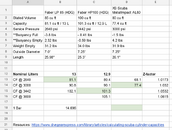I know that this is the typical approach used by Padi and other commercial training agencies.The routing doesn't necessarily remais the same. Nowadays, most people dive singles with only one first stage.
Here in Europe and UK, instead, other organizations favour the usage of larger tanks, typically 15 liters, and all have two valves and two posts (DIN compatible).
Some divers use both of them with two first stages (as me), some others rely on the safety of the DIN attachment and use only one first stage.
So for the number of divers who use already two first stages on their single tank, switching to a compact twin tank is a no-issue.
And typically the divers who want to switch to a twin tank are the same who were already using two first stages on a single tank of good size.
I see a progression here: one begins diving in a remote exotic location, in warm waters, where a single AL80 and a single reg are perfectly adeguate.
Then the diver comes back home, and continues diving in colder water, requiring a protective suit and more gas. So he switches to a single tank of more appropriate size, typically 15 liters, which invariantly is equipped with a double valve.
After a while, proceeding in his evolution, the diver buys a second first stage and a BP+wing.
And after a while in this setup, he is ready for the compact twin tank.
After this, a medium-sized twin tank is another step in this progression.
Avoiding big steps is more safe and satisfying, in my opinion.





